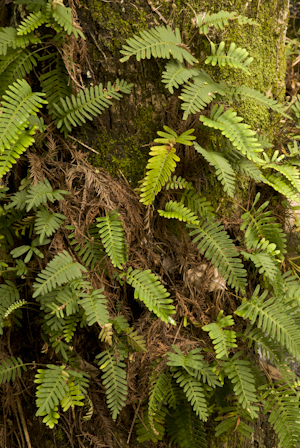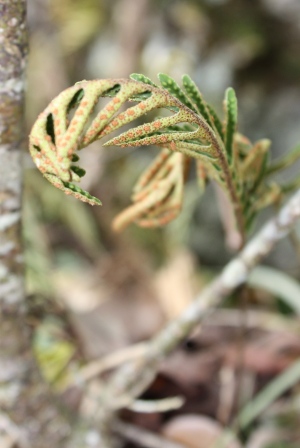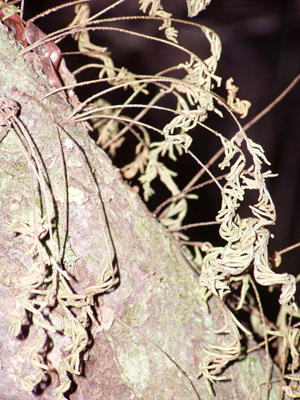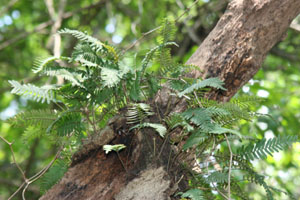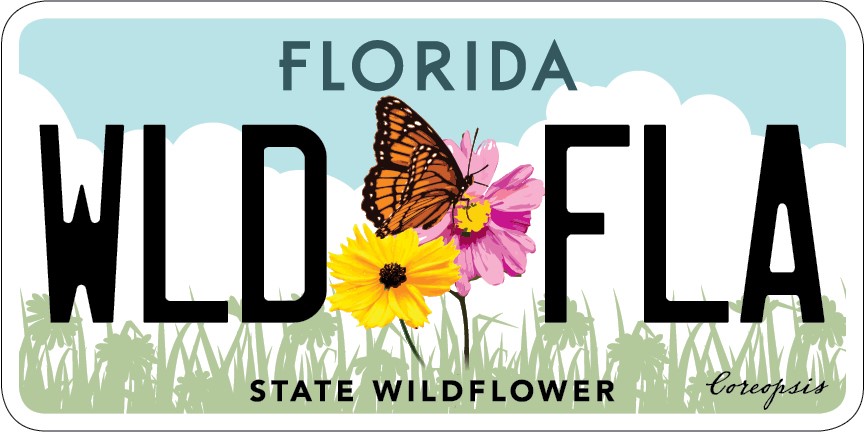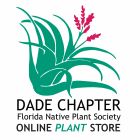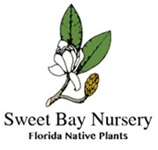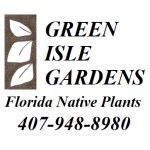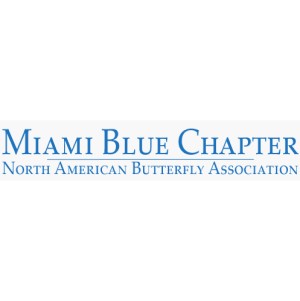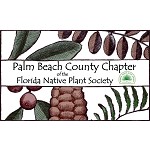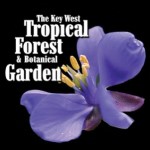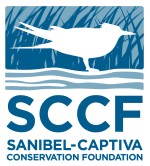General Landscape Uses:
Primarily recommended for natural landscapes and habitat restorations. Also accent epiphyte.
Availability:
Grown by enthusiasts.
Description: Epiphytic fern.
Dimensions: Fronds 4-8 inches long.
Growth Rate: Slow.
Range:
Eastern and central United States west to Texas and south to the Monroe County Keys; Mexico and Central America. Very rare in the Monroe County Keys, and perhaps absent south of Key Largo.
 Map of select IRC data from peninsular Florida.
Map of select IRC data from peninsular Florida.
 Map of suggested ZIP codes from South Florida north to Jacksonville, Gainesville, and Cedar Key.
Map of suggested ZIP codes from South Florida north to Jacksonville, Gainesville, and Cedar Key.
 Map of ZIP codes with habitat recommendations from the Monroe County Keys north to Martin and Charlotte counties.
Habitats:
Map of ZIP codes with habitat recommendations from the Monroe County Keys north to Martin and Charlotte counties.
Habitats: Moist forests and swamps.
Soils: Epiphytic; or terrestrial in moist, well-drained humusy leaf litter, acid to neutral pH.
Nutritional Requirements: Low; it grows on nutrient poor substrate.
Salt Water Tolerance: Low; does not tolerate long-term flooding by salt or brackish water.
Salt Wind Tolerance: Moderate; grows near salt water, but is protected from direct salt spray by other vegetation.
Drought Tolerance: Moderate; requires moist substrate and high humidity to thrive.
Light Requirements: Light shade to moderate shade.
Flower Color: N/A.
Flower Characteristics: There are no flowers; the plants reproduce by spores.
Flowering Season: All year.
Fruit: Inconspicuous spores.
Horticultural Notes: Can be grown from spores.
References: A Gardner's Guide to Florida's Native Plants
Comments: These ferns "shrivel up" during dry spells and then "come back to life" after a rain - hence the common name of the plant.



